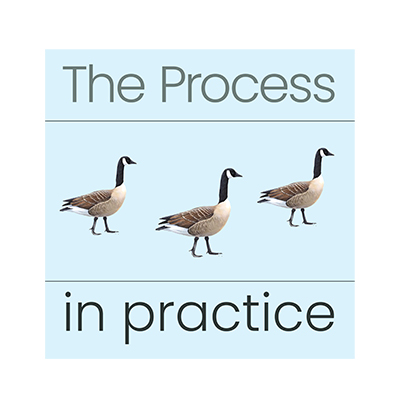
‘Whenever you point a finger, three point back…’
Transference: Overview
Transference is reacting to others the way we learned to react to our parents.
Transference (as a behaviour) is patterned, subconscious and reactive. When we’re triggered into transference, we are seeing the subject through the lens of our own childhood, and leap into making assumptions about them (their thoughts, feelings and behaviour), sometimes even choosing to disregard any evidence to the contrary.
When we’re in negative transference, it’s as if we have put a cardboard cut-out of mum, dad or our surrogates in front of someone else, and we (childishly) play out our own negative patterns around them. A good phrase to remember about transference is, ‘If you spot it, you’ve got it.’ Transference is rarely ever ‘all about’ the other person; it’s usually a lot more to do with us!
How we used Transference on the Process
Transference was introduced on the Monday of your Process week, and you looked at the transference you had had towards the facilitator team. Then, later in the week, you had the opportunity to further explore transference when you took part in an exercise where you delivered transference to other participants (in a safe and held environment!)
Working with Transference, Post-Process
The most common indicator that we are in transference is that we feel ‘charged’. We might feel overly annoyed by something and can’t easily move on from the annoyance.
When you notice that you are having transference reactions, it helps to write it all out so you can track your reactions and the corresponding patterns that you go into. You can download a worksheet to help you with that, here.
The aim here is to gain awareness of your own reactions, and to get clear about your patterns. Simply write out the transference and observe your own reactivity. Do not deliver it to the person! (If you and a loved one have both done the Process and you mutually agree to work on transference with each other, you can then deliver to each other).
Transference isn’t always negative.
We can also be in Positive Transference, where we see the other person as ‘better than’ ourselves. This still sends us into negative patterns – so work with it in the same way. Here are a few examples of different types of transference to consider:
- making instant assumptions or judgements upon first meeting someone (good or bad)
- wanting to take care of / protect someone
- a feeling that you are less than another person, or that you feel intimidated by them
- wanting to gain the attention of someone, or feeling they are not giving you enough attention
Following the transference worksheet exercise, you can then use another tool, such as Recycling, to work with the negative pattern. By clearing the transference we have with someone, we can perceive the person more authentically and will gain more of a sense of ease with our communication.
‘Wherever I go, whoever I see, I see Mummy and Daddy and they see me.’ Bob Hoffman
Some notes on transference
- Transference isn’t gender specific, because patterns aren’t!
- Because transference is rooted in our childhood with mum and dad, it often happens around figures of authority.
- We can’t avoid transference. It is inevitable, a normal part of the human experience. What we can do is practice awareness and work through our reactivity.
- We will trigger transference for others. That’s also inevitable – so you might as well be yourself!
If you want to return to the Post Process homepage, click here.
To go back to the other Hoffman tools, click here.







